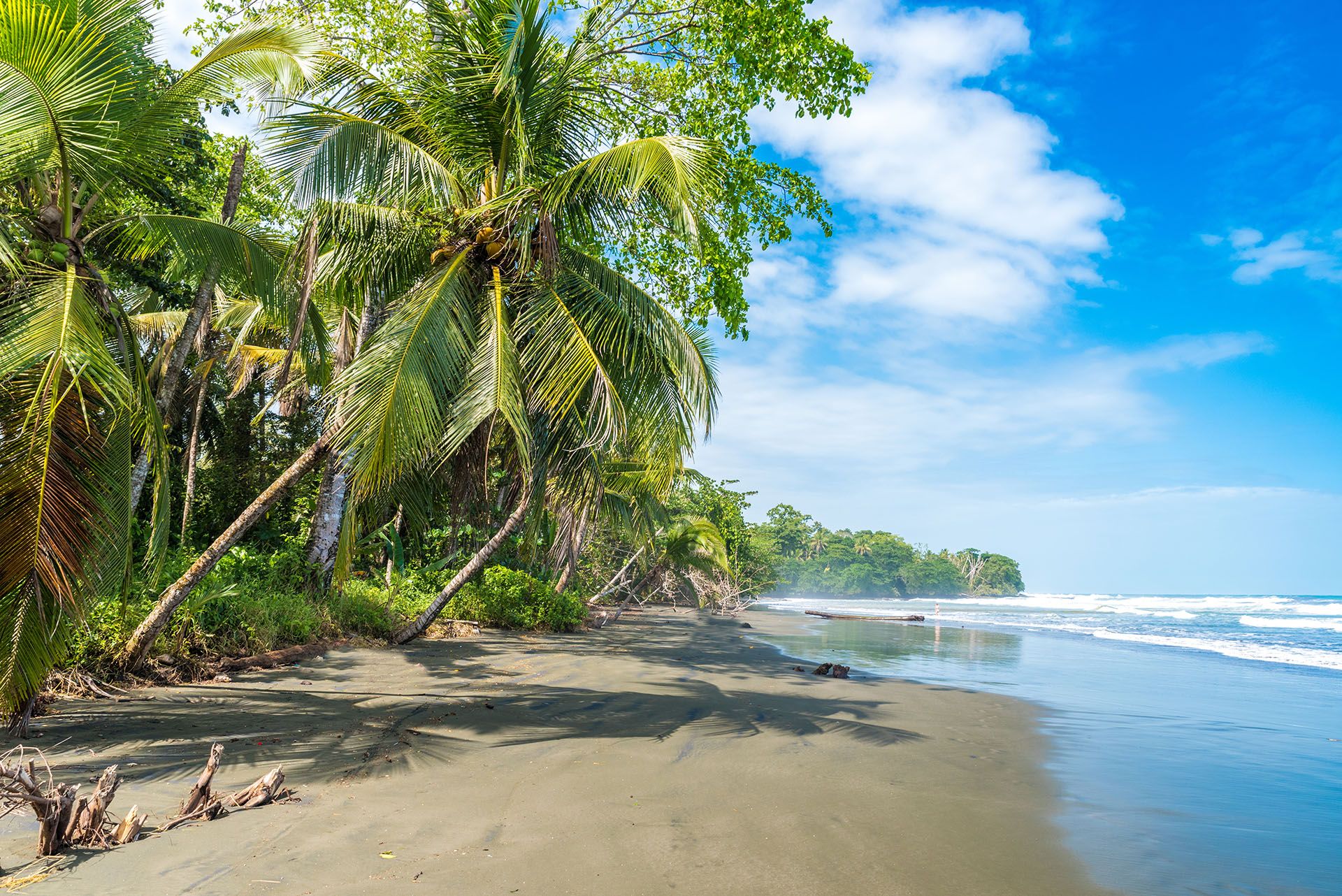Planning your trip to Costa Rica in March
A few Costa Rica travel tips to keep in mind:
What to pack
March is hot, so pack light in every sense. Tank tops, breathable fabrics, and UV-protective swimwear if you’ll be spending long days in the sun. A cooling towel or bandana helps when things get sticky. For the beach, a fold-up umbrella or pop-up tent is great if you burn easily or just need a break from the sun. Wet wipes and hand sanitizer make a huge difference after dusty roads or sweaty hikes. You won’t need much for cooler weather, but if you’re headed into the highlands, one light layer is enough.
Planning your itinerary
If you’re heading to Costa Rica in March, starting with an itinerary can make the planning process smoother. Here are a few suggestions:
- Costa Rica itinerary 5 days: Start in San José for a couple days, then head to La Fortuna to explore the rainforest and waterfalls. Hike around Arenal Volcano, then finish up in Monteverde with its cloud forest and hanging bridges, before heading back to San José for a coffee farm tour.
- Costa Rica itinerary 7 days: Begin in San José, spend a few days in Manuel Antonio’s beaches and rainforests, then zipper-line and check out the hanging bridges in Monteverde. End your trip in La Fortuna with Arenal Volcano, trails, waterfalls, and hot springs.
- Costa Rica itinerary 10 days: Start off in San José, travel to Tortuguero’s wildlife-filled canals, then visit La Fortuna and Arenal Volcano. Spend time in Manuel Antonio National Park with its beaches and diverse wildlife, and finish your trip at Jaco Beach for some surf and sunset views.
- Costa Rica itinerary 14 days: Start your trip in San José, head to Tortuguero’s canals, Puerto Viejo’s Caribbean charm, and Cahuita’s coral reefs. Then explore La Fortuna and Arenal Volcano, Monteverde’s cloud forests, and wrap up in Manuel Antonio for its beaches and wildlife.
When to book
March is packed. You’ve got spring breakers, snowbirds, and sometimes Holy Week (Semana Santa) all landing around the same time. Pacific beach towns and big tourist spots can feel especially full. If you want to stay anywhere near the beach, it’s best to book your hotel four or five months ahead. Same goes for popular tours—whitewater rafting, night hikes to see turtles, cloud forest treks—they fill up fast. If you’re traveling during Holy Week, transportation can be limited and prices spike, so consider staying in one spot rather than moving around.
Emergency weather information
Heat stroke becomes a real concern, especially in the lowlands and along the coast. If someone’s confused, not sweating, or running a high temp, it’s time to act fast. Stay in the shade, hydrate constantly, and don’t push it mid-day.
Winds can still be strong, especially near the Nicoya Peninsula, and that makes both boating and swimming more dangerous. Always check wind conditions before heading out on the water. Wildfire risk is highest this month too, so avoid dry trails and report any smoke you see.
In remote areas, emergency services might take a while. Pack a small first aid kit and ask around—many communities use WhatsApp for local alerts, and those groups are often faster than official updates.
For more travel inspiration, see our guide to creating your own Costa Rica itinerary, with tips from local travel experts, or find extra ideas in our tailored Costa Rica trips.





